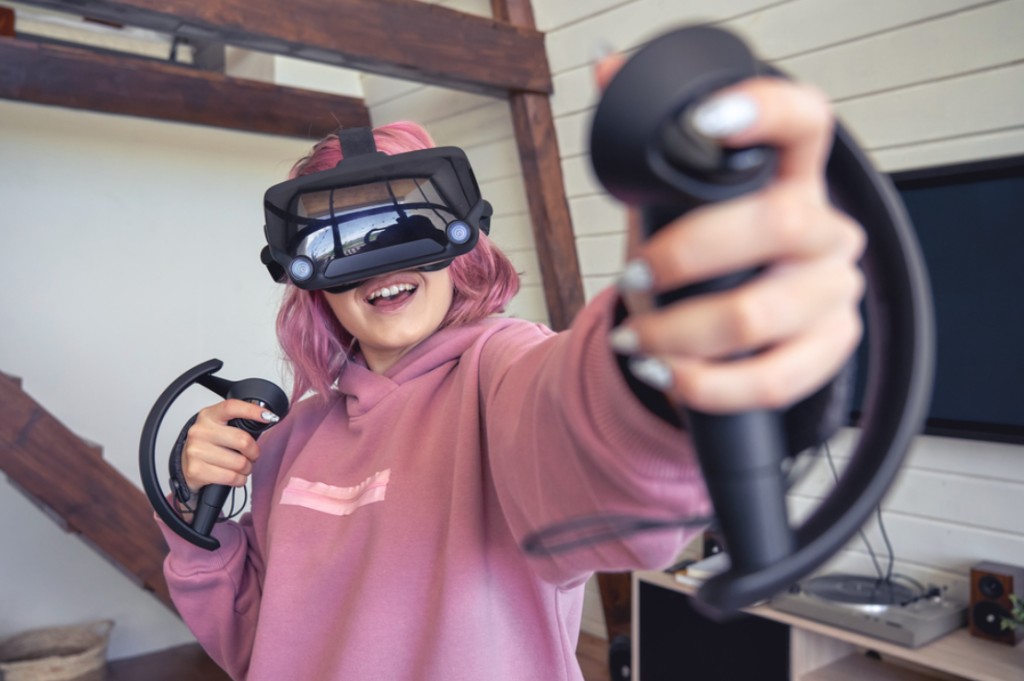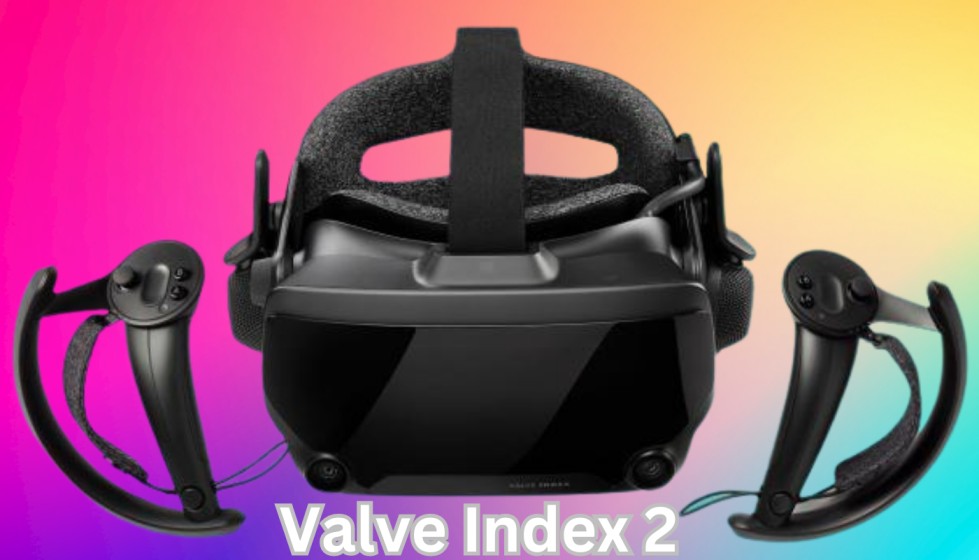Valve Index 2 is the rumored successor to the Valve Index, one of the best PC VR headsets on the market. The original Valve Index was released in 2019 and has been praised for its high-resolution display, wide field of view, comfortable design, and innovative controllers. The VR industry’s swift evolution incites curiosity among enthusiasts about Valve’s upcoming VR headset plan.
In this article, we will explore the possible release date, features, and cost of Valve Index 2, based on rumors, leaks, and official information.
Release Date Expectations for Valve Index 2

There is no official confirmation or announcement from Valve about the development or release of Valve Index 2. However, some clues suggest that Valve is working on a new VR headset codenamed “Deckard”. This name was found in some SteamVR files that appear to reference a standalone VR headset. Additionally, some patents filed by Valve indicate that they are experimenting with new technologies for VR, such as wireless connectivity, eye-tracking, and pancake lenses.
Based on these hints, some speculate that Valve Index 2 could be announced later this year or in early 2023. However, there are also some factors that could delay the release of Valve Index 2. One of them is the supply chain issues caused by Covid-19, which have affected many technology manufacturers and products. Another factor is Valve’s focus on the Steam Deck, a handheld gaming device that is expected to launch in February 2023. Valve may not want to divert attention from its new console to its new VR headset.
Therefore, a realistic expectation for the release date of Valve Index 2 is sometime in late 2023 or early 2024. This would also align with the typical cycle of VR headset releases, which is usually around two to three years.
New Features and Improvements in Valve Index 2
While there is no official information about the features and specifications of Valve Index 2, we can make some predictions based on the rumors, leaks, and patents mentioned above. Here are some of the possible new features and improvements that Valve Index 2 could offer:
- Higher resolution and micro-OLED display: The original Valve Index has a resolution of 1440 x 1600 pixels per eye and an LCD display. While this is already impressive, some competitors have surpassed it with higher resolutions and OLED displays. For example, the HP Reverb G2 has a resolution of 2160 x 2160 pixels per eye and an OLED display. Therefore, it is likely that Valve Index 2 will increase its resolution and switch to a micro-OLED display, which offers better contrast, color accuracy, and refresh rate.
- Pancake lens for a smaller form factor: One of the drawbacks of the original Valve Index is its bulky and heavy design. It weighs about 809 grams and has a large front panel that houses two Fresnel lenses. However, a patent filed by Valve suggests that they are working on a new type of lens called the “pancake lens”, which is thinner and lighter than Fresnel lenses. This could reduce the size and weight of Valve Index 2 and make it more comfortable to wear.
- Wireless connectivity: Valve’s recent patent filing suggests the development of a wireless adapter for VR headsets. With this device, VR headset owners can establish a connection with their PCs void of cables. The absence of cords enhances VR user mobility, allowing for unimpeded movement, while avoiding entanglement and trip hazards.
- Eye-tracking technology: Eye-tracking in VR headsets monitors the user’s gaze direction and movement. It unlocks a variety of benefits for VR enthusiasts, including foveated rendering that lessens rendering strain by centering on the user’s focus point. Additionally, dynamic focus modifies the focus according to the depth of the scene. Social interaction is another benefit, permitting users to maintain eye contact and display emotions. It also improves the user interface by letting users navigate menus and options using eye movements. Valve, according to a patent filing, is developing an eye-tracking mechanism for VR headsets.
- More powerful processor: The original Valve Index requires a powerful PC to run smoothly. The minimum requirements are an Intel Core i5-7500 or AMD Ryzen 5 1600 processor, 8 GB of RAM, and an Nvidia GeForce GTX 970 or AMD RX 480 graphics card. However, with the expected increase in resolution and features, Valve Index 2 may need a more powerful processor to handle the load. Some rumors suggest that Valve Index 2 could use a custom chip designed by Valve or AMD.
- Enhanced sound and microphone quality: The original Valve Index has a unique sound system that uses off-ear speakers instead of headphones. This creates a more immersive and natural sound experience for VR users. However, some users have complained about the lack of bass and noise isolation. Therefore, Valve Index 2 could improve its sound quality by adding more bass and noise cancellation features. Additionally, Valve Index 2 could also improve its microphone quality, which is important for communication and voice commands in VR.
Competition in the VR Market and the Impact on Valve Index 2
The VR market is becoming more competitive and diverse, with different VR headsets catering to different audiences and needs. Some of the potential competitors for Valve Index 2 are:
- PSVR 2: Sony affirms its ongoing development of a new PlayStation VR headset, destined to be PlayStation 5’s ally. The forthcoming PSVR 2, anticipated for unveiling either at the end of 2023 or the beginning of 2024, boasts enhancements. A more defined display, advanced tracking, unique controllers, and exclusive games highlight its promising features. PSVR 2 could pose a threat to Valve Index 2 in terms of content and accessibility, as it will offer a large library of VR games and a lower price point than PC VR headsets.
- Meta Quest Pro: Meta (formerly Facebook) has been dominating the VR market with its Oculus Quest 2 headset, which is a standalone device that does not require a PC or console to run. The Oculus Quest 2 enjoys commendation for its cost-effectiveness, mobility, and flexibility, including the capability to link to a PC with a cord or without one. Meta implies progress on an advanced Oculus Quest 2 version, named Meta Quest Pro. This new model promises features like eye-tracking, face-tracking, and the fusion of real and virtual reality. Meta Quest Pro could challenge Valve Index 2 in terms of innovation and convenience, as it will offer more features and functionality than PC VR headsets.
- Apple VR/AR headset: Speculation suggests Apple is crafting a VR/AR headset, amalgamating virtual and augmented realities in a singular gadget. The company anticipates unveiling this sleek, well-designed device, boasting high-definition visuals, eye and hand motion detection, and three-dimensional sound by 2024 or beyond. Apple’s headset could compete with Valve Index 2 in terms of quality and brand recognition, as it will offer a premium product with Apple’s signature style and ecosystem.
Given the competition in the VR market, Valve Index 2 will need to stand out with its unique features and compatibility with popular games. Valve has an advantage in terms of its Steam platform, which hosts a large number of VR games and applications. Valve also has some exclusive titles for its VR headsets, such as Half-Life: Alyx, renowned as a top-tier VR game, which earned wide acclaim. Valve Index 2 could leverage its Steam library and exclusive content to attract more VR users and fans.
Conclusion: Anticipation and Expectations for Valve Index 2’s Release
Valve Index 2 is a highly anticipated VR headset that could offer significant improvements over the original Valve Index. While there is no official confirmation or announcement from Valve about the release date, features, or cost of Valve Index 2, some rumors, leaks, and patents suggest that Valve is working on a new VR headset codenamed “Deckard”. Based on these clues, some speculate that Valve Index 2 could be announced later this year or in early 2023, and could feature a higher resolution display, pancake lens, wireless connectivity, eye-tracking technology, more powerful processor, and enhanced sound and microphone quality. However, there are also some factors that could delay the release of Valve Index 2, such as supply chain issues caused by Covid-19 and Valve’s focus on the Steam Deck.
Valve Index 2 will also face competition from other VR headsets in the market, such as PSVR 2, Meta Quest Pro, and Apple’s VR/AR headset. These competitors could offer different advantages in terms of content, accessibility, innovation, convenience, quality, and brand recognition. Therefore, Valve Index 2 will need to differentiate itself with its unique features and compatibility with popular games on Steam.
Valve Index 2 is expected to be a premium product that will cater to hardcore VR enthusiasts who want the best PC VR experience possible. However, it may also appeal to casual VR users who want to try new technologies and features that enhance their immersion and interaction in VR Valve.



